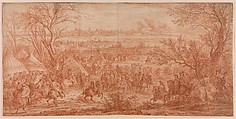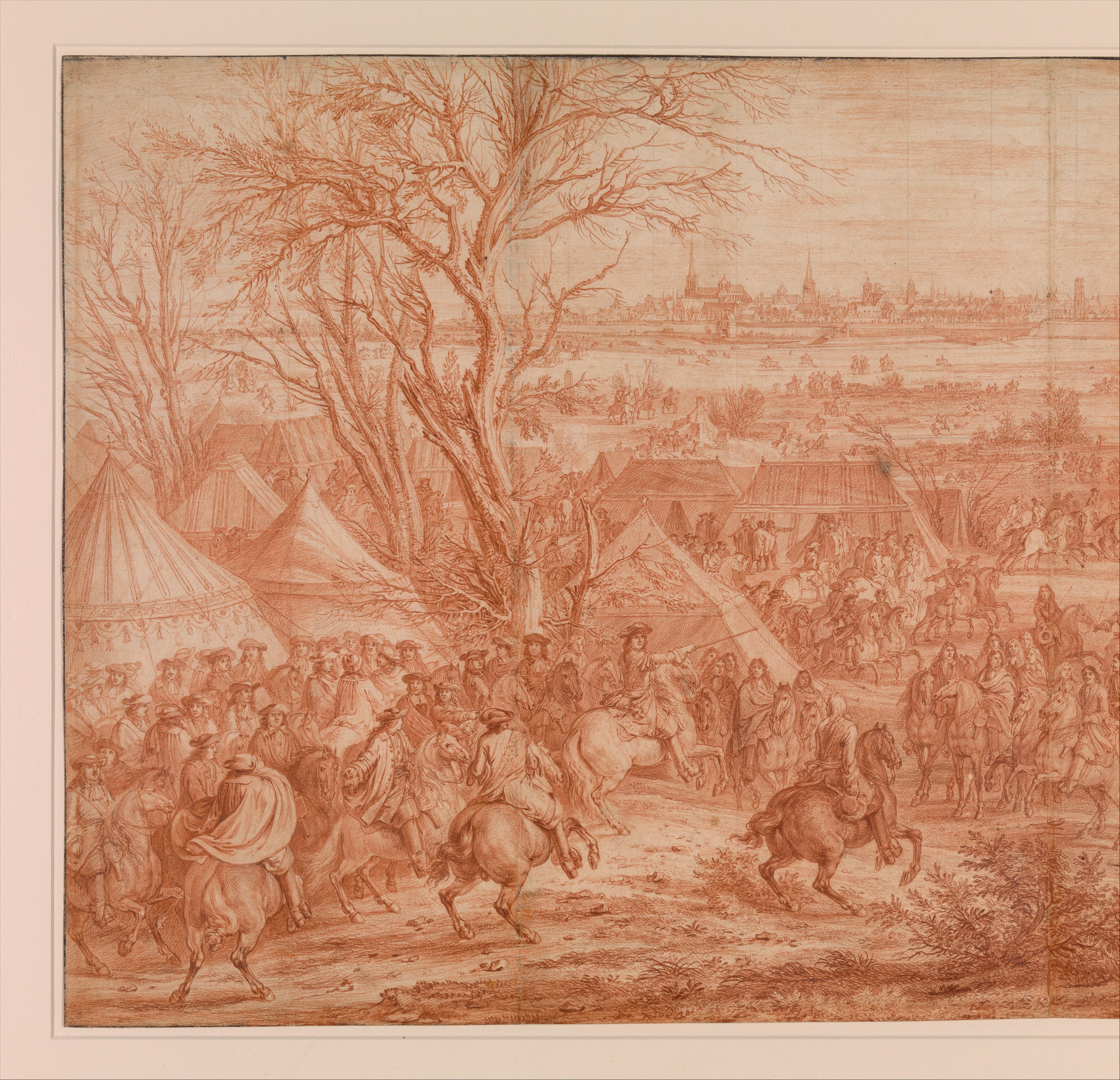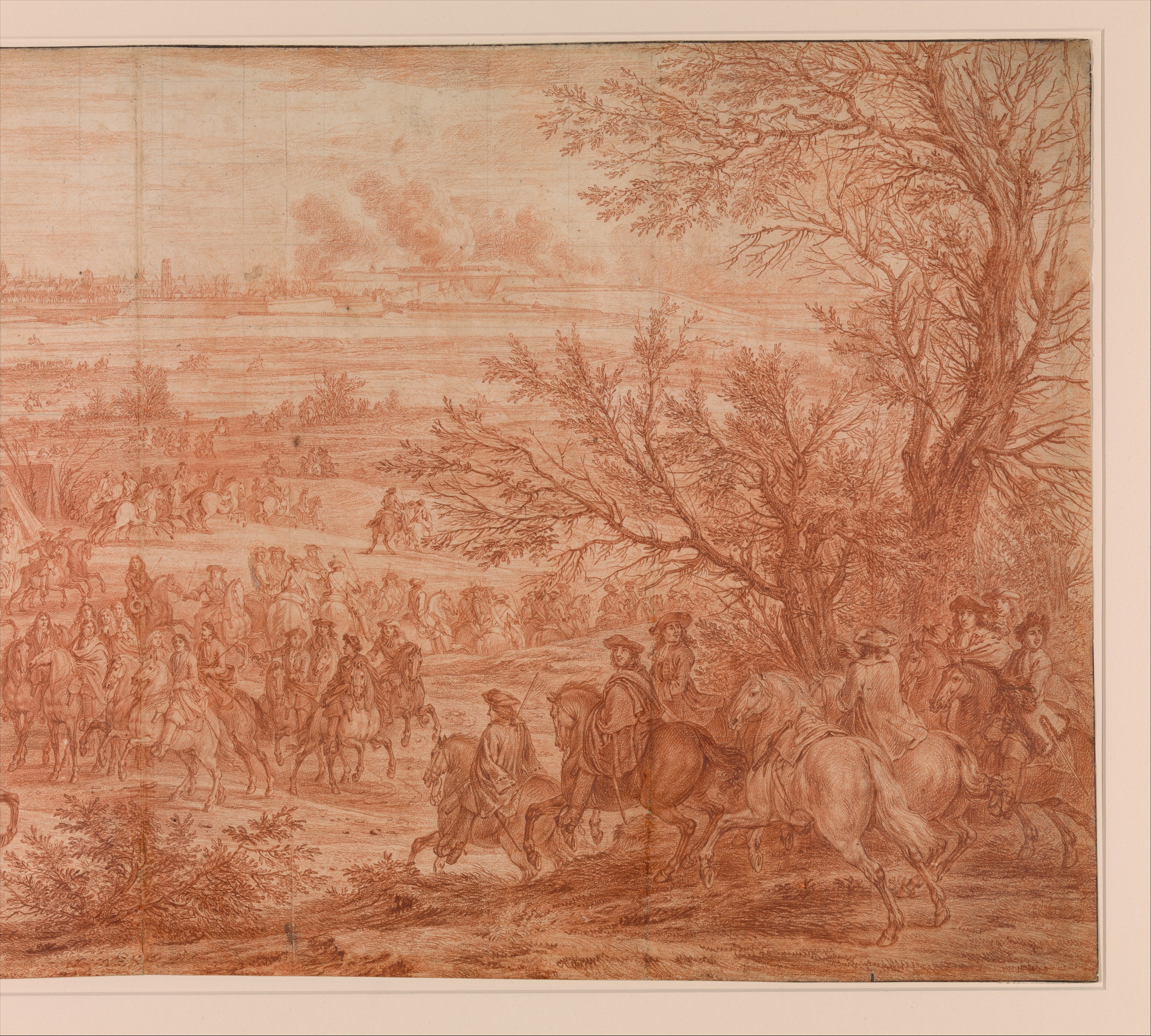Louis XIV at the Siege of Cambrai, Seen from the South-West (March 20–April 19, 1677)
studio of Adam Frans van der Meulen Flemish
Not on view
Flemish by birth and training, Adam Frans van der Meulen, called to Paris in 1664, owes his reputation to the battle scenes commemorating Louis XIV’s military exploits. As "Ordinary Painter of the King’s Conquests", Van der Meulen joined the French army on its campaigns, painstakingly recording the subjugated towns on paper. On the basis of such drawings, Van der Meulen and his collaborators could later create paintings and designs for prints and tapestries which celebrated the expansion of France’s territory. The Museum’s drawings depicts a moment in the Franco-Dutch War (1672–9), during which the king attempted to consolidate France’s northern frontiers: the siege of Cambrai, a city located in the present-day Nord-Pas-de-Calais region in France but then belonging to the Spanish Netherlands, which lasted from March 20 to April 19, 1677. The city is represented from the south-west, with in the foreground the king on horseback, surrounded by his general staff near their tents pitched among the trees framing the composition. He is portrayed as he gives his troops the decisive order to besiege the city, of which the cathedral of Notre Dame can be recognized at left, and the citadel at right.
Though not preparatory for it, the drawing can be connected with a painting executed by Van der Meulen around 1680, now at the Musée de Cambrai, of which several replicas exist. An initial sketch in red chalk for the composition is at the Bibliothèque nationale de France, Paris, while the view of the town must have been based on a detailed panoramic study made by Van der Meulen during the campaign, of which a studio copy is preserved at the Mobilier National, Paris (inv. 38). The competent but somewhat dry execution of the Museum’s drawing suggests it was also made by an assistant, rather than by Van der Meulen himself. It is similar in quality and almost identical in composition to another studio version at the Mobilier national (inv. 37), which is partially incised and probably served for the multiplication of painted versions. The Museum’s drawing is smaller and corresponds in size with an engraving after the painting by Robert Bonnart from 1686, part of a series of prints illustrating the king’s conquests, designed and published by Van der Meulen. Although it is in the same orientation as this print, the drawing may have been made in the painter’s studio and under his supervision as the direct model for the printmakers. For the drawing, as for the prints, an exceptionally large, single sheet of paper, produced in the Auvergne, was used.
This image cannot be enlarged, viewed at full screen, or downloaded.
This artwork is meant to be viewed from right to left. Scroll left to view more.






